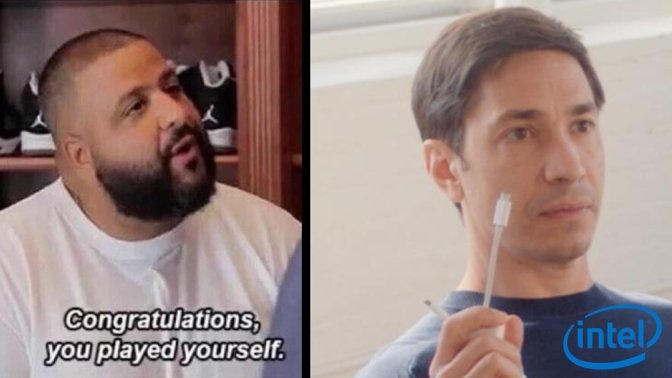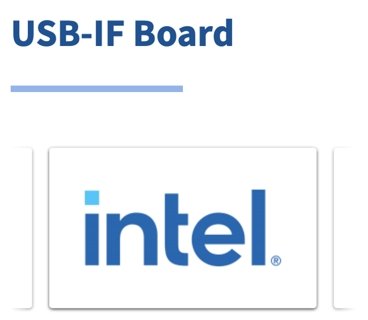It's clear that the ad wizards behind Intel's new "Go PC" campaign thought they were clever in hiring "Get a Mac" actor Justin Long to extol the virtues of Intel-based Windows PCs. If only they had thought of also giving him something clever to say.

The new "Go PC" campaign features commercials, website banners, and a new Intel page entitled "Apple M1 vs Intel -- Which Processor Is Right for You." Spoiler alert: Intel's idea of what's "right for you" has no real basis in reality.
There's a lot to pick apart from this campaign: battery life claims that are completely disconnected from countless independent real-world tests and comparisons; boasting about Windows-compatible games when users need an Nvidia or AMD graphics card (certainly not Intel integrated graphics) in order to play them; showing results with apps that require Rosetta 2, rather than native Apple Silicon apps, to skew the results in favor of Windows PCs.
But the most egregious, hilarious and/or sad (pick your adjective) attempt at a zinger is in Intel's failed attempt at a dunk on USB-C dongles. In a tweet sent out this week, Intel posted a picture of Long holding up a number of USB-C dongles tethered together, with the rhetorical question "Anyone know who these belong to?"
Why, yes, Intel, we do know who those USB-C accessories belong to: They're certified by the USB Implementation Forum, of which Intel is a board member.

In fact, Intel is such a big fan and supporter of USB-C that the company uses the exact same connector for its proprietary Thunderbolt cable. And the Thunderbolt 3 spec, which Intel created, is included in the USB 4 standard, which, wouldn't you know it, also uses the USB-C connector.
Even better, an ad spotlighting the campaign on the front page of Intel's website shows Long holding what appears to be a Dell XPS 13 laptop -- an Intel-based Windows PC that has two USB-C Thunderbolt ports, and no legacy USB-A ports.
Better not ditch those dongles just yet, Justin.
To be clear, there are some legitimate issues with Apple's currently limited M1 lineup of Macs spotlighted by Intel, including the fact that they only support a single external display. But that completely ignores the fact that M1 is Apple's entry-level processor, and more powerful Apple Silicon is expected to debut this year. Not to mention those who do need multiple external monitors can still buy a perfectly capable Mac with (you guessed it) an Intel processor.
No offense to Long -- he's a fine actor, and hey, a gig is a gig -- but Intel's "Go PC" campaign is little more than a casting stunt. I'd say it's all style and no substance, but suggesting there is any "style" to Intel's disjointed, aimless effort would be generous, to say the least.
The whole "using a competitor's spokesperson to flip the script" trope is nothing new in advertising -- in 2019, Sprint did it with the Verizon "Can You Hear Me Now?" guy. Sprint merged with T-Mobile less than a year later, and the Sprint brand name was retired. So how'd that campaign work out?
Intel's campaign, of course, is in response to the fact that Apple is moving its Mac platform away from Intel processors. At launch, the "Go PC" effort appears to be on a path to create the same level of "magic" that booking the Verizon guy conjured up for Sprint, before turning magenta from embarrassment.
The tagline for Intel's "Go PC" campaign is "Get Real." Perhaps these ads are more "real" than anyone realizes, revealing Intel as an outdated brand, stuck in the past, and not nearly as clever as the people behind it think it is.